Smarter SEO beats bigger Adwords budgets
It was just a few years ago we were introducing our sometimes skeptical clients to the cost efficiencies of online search in their marketing mix. It didn’t take long for them to become converts, with conversion rates so much higher than press and radio advertising. It was as simple as buying category keywords prospects were searching for when researching a purchase decision. For one client in particular, a cosmedic company, a Google Adword campaign was delivering sales for under $30 when traditionally they were resigned to having to spend upward of $400 per sale using press ads. Like most things in the world today, things have changed very quickly.
Google Adwords not the cheap fix it once was
While our clients were at the front of the adoption curve, plenty of followers have made online adword campaigns much less cost effective. Google is in the unique position in Australia of having a controlling share of the search engine market. While in Asia players such as MSN offer advertisers alternative places to reach prospects, here 90% of all people who search online use Google. So if you are an advertiser, you are competing with every one of your competitors for the same limited listing in a limitless bidding war. If you want to be on the first page of results, the same words we bought for cents a few years ago can now cost dollars. Our client who used to be able to grab sales conversions for $30 and below would now have to regularly expect to pay $150 or more. Meanwhile, newspapers are doing deals, so the gap for many advertisers is closing again. Or is it? What are the advertisers at the front of the curve doing?
Natural search is the answer to gaining exposure online
At UNO we’ve been delivering our clients what is close to free leads for years now using Search Engine Optimisation (SEO) techniques. How does it work? A Google search page has three sections. Paid results appear across the top and down the right side of the screen. This is what advertisers bid against each other for. Yet research has shown 75% of all people who search on Google ignore the paid ads and click on the results in the third area, the natural or organic listing in the main body of the page.
So while the majority of companies are still competing in a bidding war for 25% of the prospects, smart advertisers are using SEO experts to help them achieve a higher listing in the main game, the natural search listings that you don’t have to keep paying for again and again. Done right, SEO for natural search pays long term dividends.
Read MoreHere is the news in mass media marketing
A few weeks ago I cancelled my daily newspaper subscription. Not because of the increasing use of bad puns in headlines, a direct result of the publisher subbing out writing to young graduates to lower costs and supposedly bring a youthful feel to the paper. No, I cancelled on the day the business section shrunk to just three pages of mostly superficial stories.
I’m not alone, an associate cancelled his subscription because of the increase in typos and doubling up of stories in different sections.
While once loyal readers are deserting, publishers are desperately trying to entice. The same paper gave me a free 10-week subscription when I signed up to a wine club the following week. I read online free from the same masthead. Since 2001 the Media Alliance estimates that the number of full-time journalists working on Australian newspapers has fallen by 13 per cent or roughly 1000 to 7500.
The hen and egg question of what came first – the thinness of content or the decrease in advertising to underwrite good journalism, is superseded by the issue of where have the readers gone?
Online, just like you.
The news in the last few months is an indication the tipping point is here…there are lists, (found online in seconds) of the latest closures around the world, from Colorado’s oldest paper, The Rocky Mountain News to The Boston Globe.
PriceWaterhouseCoopers latest survey predicts global newspaper decline of 10.2% this year.
What does the decrease in readership of press mean to mass marketers?
Well there’s no refuge in TV. The diminishing returns of this medium in Australia, where the cost per thousand eyeballs doubled over a seven year period while the number of potential viewers declined by 20% means ever diminishing returns for TV ads.
Yet there are still people who spruik packaged TV ad formats that exclaim “Brand News” on TV is more effective? Than what, bad brand ads on TV? Either way, with fewer viewers for greater expense than ever before, the high cost of entry to producing and running ads on TV are driving marketers away. While a FinReview survey of marketers indicated they are sticking with TV ads for their brand marketing, the long term media spend trends show doing the same as before is on the way out.
Australian online ad spend is up 14 percent to an annual $1.4 billion
The smart marketing investment is micro-managed across dozens of touch points, from the web to activation at point of sale. The smart marketer is looking for measurable results, insightful strategies and creative that cuts through and adds value in a sea of clutter.
Read MoreGet social media right or "you're stuffed"


Every time you use something that you aren't being charged for, remind yourself, it's because you are the product. SMH.com.au, LinkedIn, Facebook, Pinterest all let you read and/or post for free because they are making money out of YOU. Businesses of all kinds are constantly gathering data from you and about you and your contacts most of the time you do something digitally. Facebook can now access your phone’s microphone to eavesdrop on what you are listening/watching while you post an update.
The upside is you will be served ads or content or search results that have been vetted just for you. The downside if you're marketing your own business online is you have to recognise the average person will increasingly expect to receive only what they care about.
Social marketing 101: What's in it for your customer?
As Jane Caro told a room full of online marketers recently, people are "entirely able to screen you out no matter how much money you put behind (your message.)
“If the message is not relevant, if the message doesn’t mean anything to them, you’re stuffed.
“the power has moved from those people with large pockets to the population at large. But you can have no money at all and send a Tweet that resonates and takes off like wildfire and suddenly you’re famous.”
Research by McKinseys has shown businesses have found the primary benefit of embracing social media is the ability to open a dialogue with customers and actually listen to what customers want. Not talk at them like a brochure, but understand what they care about and respond, or learn and move on. Here's a reminder of the simple etiquette of doing a business on the Itnerweb.
3 rules of social media engagement: the 3 Rs
To participate in social media as a representative of an organistion or company it is important to remember 3 rules.
Be clear about who you are representing, take personal responsibility for ensuring that any references to your company are factually correct and accurate and do not breach confidentiality requirements, and show respect for the individuals and communities with which you interact.
Remember, you are personally responsible for the content of the posts online. If employing a ghost writer, it is your responsibility to sign off on final content. Ensure any information about your products and services that you provide is true and factually accurate.
Respect copyright, privacy, financial disclosure and other applicable laws when publishing on social media platforms.
If you break the law you may also be personally liable.
Read MoreThere is no best way to compete


Remember that scene with Steve Martin ordering coffee L.A. style – "a half double decaf decaffeinated half caf... with a twist of lemon." (The video is at the end for you to enjoy.) It seems every single decision we now make throughout the day comes with an endless number of choices.
So it came as no surprise when a global a marketing guru presented research to the World Business Forum in Sydney that proves, in industry after industry, there is no single best way to compete.
How to differentiate your brand today
The worst mistake in strategy is to compete with rivals on the same dimensions, Professor Michael Porter says. The man who’s made strategy his life work says many businesses still get confused around the definition of the concept of differentiation, and that even trying to be ‘the best’ means a business is starting in the wrong place strategically.
Porter points out "we all know it’s impossible to meet every need of every customer uniquely well. That’s impossible. There’s no one way to deliver value.
“Strategy starts with a notion that the fundamental question is not how to be the best, it’s actually how to deliver something unique. To the customers you’re choosing to serve. Not because what you’re doing is ‘the best’ but because what you’re doing is delivering distinctive value.
Strategy is about being unique. That’s ultimately what all successful companies are able to achieve for some period of time."
The formula for growing challenger brands
If today we are spoiled for choice, it follows the prospective customers for our business are too. So instead of seeking some magic wand global answer, a better strategy is to identify one thing people you're trying to serve actually care about. Something that you're good at delivering. Finding your mojo is the fundamental starting point in our formula for growing challenger brands.
Read More
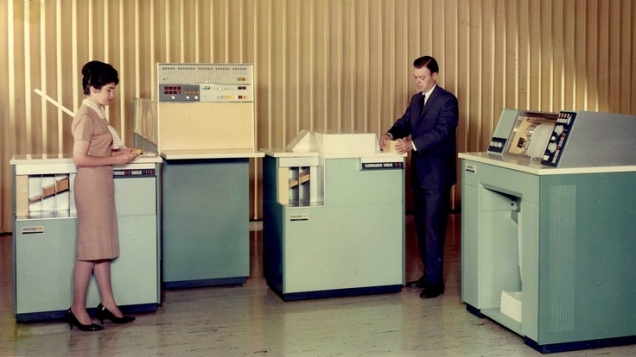
The head of marketing will soon be spending more on IT than the head of IT, so a recent study by Gartner found. Last week at the annual adfest in Cannes, Ogilvy's top creative warned of how too much faith was being put into data and not enough into ideas. This was resulting in well planned and placed ads that don't actually achieve much.
Where is the real value to be found in marketing?
The more things change the more they stay the same. The problem in the past was IT managers spent a fortune, first on hardware and then software to sytemise the running of the business. Whether or not the customers' experience was improved was not the concern of the CIO. You only had to dial 3 for support to know that. The main focus of the CIO was all about having bragging rights his IT budget was bigger than the competitors'.
Now we are seeing marketing managers playing the same game, "my Big Data budget is bigger than yours." Businesses are paying more and more to collect big brother levels of information on people. You've experienced the result like everyone else – being hit with ads on Facebook when all you want to do is see a picture of a friend's fishing trip. This may be how Zuckerberg will try to make an earn for shareholders, it isn't the road to marketing Nirvana. Just like the IT managers of the past, what the customer wants once again isn't the focus.
The constant here is managers within the business concentrating on the business of the business, rather than looking for ways to make a customer's life better. You probably recognise the trap, I fell for it. For several years I paid too much time and money on experienced professional staff and IT consultants to implement and manage programs to systemise my business. None of it added to the power of connecting and motivating, inspiring or creating. It was money spent on smooth bureaucracy for neatness sake and failed to grow my customers' businesses, nor consequently my own.
Rational Vs emotional marketing approach
"Investment" in IT has always been a rational spreadsheet sell to the chief decision maker. How often have you witnessed a marketing department asking for a "brand building" budget lose out to the CIO who could promise a guaranteed ROI from some new IT? Problem is marketers seem to be giving up the fight at the board level for using emotion to connect with customers, instead choosing the easy route of asking for funding for data. Spend X get Y. Yet economic modelling consistently shows the customer is innately irrational, human beings are pre-programmed that way. This is at the heart of getting the best marketing ROI.
Your customers are more emotional when making purchase decisions than rational
The influential role of emotion in consumer behavior is well documented, here is a summary by Antonio Damasio, professor of neuroscience at the University of Southern California –
- MRI neuro-imagery shows that when evaluating brands, consumers primarily use emotions (personal feelings and experiences) rather than information (brand attributes, features, and facts).
- Advertising research reveals that emotional response to an ad has far greater influence on a consumer’s reported intent to buy a product than does the ad’s content – by a factor of 3-to-1 for television commercials and 2-to-1 for print ads.
- Research conducted by the Advertising Research Foundation concluded that the emotion of “likeability” is the measure most predictive of whether an advertisement will increase a brand’s sales.
- Studies show that positive emotions toward a brand have far greater influence on consumer loyalty than trust and other judgments which are based on a brand’s attributes.
So it follows a business that concentrates on chasing efficiency by spending big on data risks failing to connect on the more powerful emotional level.
Challenger brands care most about what the customer thinks matters most
Challenger brands that actually care about what customers want are winning by using the Cloud to remove superfluous steps from the delivery of products and services, often without big IT budgets. One example I know intimately is an Australian first, UNOsmsf, Cloud based Self Managed Super.
The rational customer benefit: More choice, more control, lower fees. We'll be using an emotional truth to appeal to prospective clients: your fund can do better than your mates with more money who are paying through the nose for an average product the big banks want to sell them using big data.
Check out the superannuation challenger brand taking on the banks from the Cloud.
Read More
Top 5 biz management blunders


Have you read any of Robert Gottliebsen's recent articles on the impending 12 billion dollar plane crash coming our way? Australia's purchase of three squadrons of Joint Strike Fighters – 58 at over $100million each is a fine example of the 5 management blunders many businesses tend to make.
5 blunders for management to avoid (& tips on marketing)
Gottliebsen quoted Liberal senator Jensen, a scientist, explaining what a blunder the decision to purchase the JSF is proving to be. Here I paraphrase Robert, with my own warnings on the blunders to avoid when making decisions about marketing::
Rule 1 of management blunders
Ignore expert advice and go with your gut. A decade ago Australia's manager at the top, John Howard, ignored the advice of aviation experts and bought into the development of the JSF. In my experience, being told the CEO doesn't believe in marketing or paying for external advice is more common than finding a boss willing to admit where their expertise ends.
Rule 2 of management blunders
When you make a big decision, those who continue to oppose you need to be pushed aside -- everyone must get with the program. Creativity is stifled by group think, yet it's creative thinking that helps businesses compete on their own terms, rather than taking the category head on.
Rule 3 of management blunders
All staff involved in the decision are ‘looked after’. E.g. In the case of the JSF, Senator Jensen has studied carefully what happened and says "there are too many who get jobs with contractors where they have provided advice favouring that contractor's product.” Advertising is renowned for managers procuring from friends who are designers, family members who know photoshop and printers who give them tickets to the rugby.
Rule 4 of management blunders
Delay as long as possible in telling the people at the top that the decision is wrong. In corporations, big, sudden write-downs are often caused because management down the line keeps putting a good spin on the data to keep their jobs, until finally they have to confess. Or in my experience, they are found out long after they've moved on. One CEO didn't realise that for two years none of my proposals to fix their problems had ever been passed up to him by his marketing manager. It was only after firing the manager he discovered an email trail where my strategies and estimates had been constantly forwarded to her close friend, who was then being commissioned for services beyond their capability at far higher prices.
Rule number five
Obscure the costs with all sorts of creative accounting. In marketing and advertising, this is really easy when so many managers claim to know the cost of everything, when they actually don't understand the value of anything.
The common theme here is the tendency of management to throw staff at problems, at great long term cost, when trusting experts would be better for business.
Read More
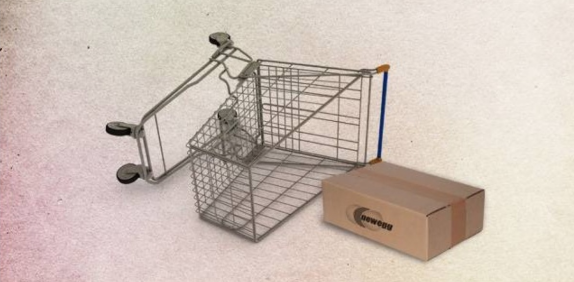
The idea that online retail is about discounts isn't in line with the facts. While margins might be tighter, e-commerce is no longer just about bargains and end-of-line clearances. The latest NAB Online Retail Sales Index shows just how broad Australian retailing has become. Daily Deals sites are stuck at 3% share. The biggest online sales growth stories now are in liquor and groceries.
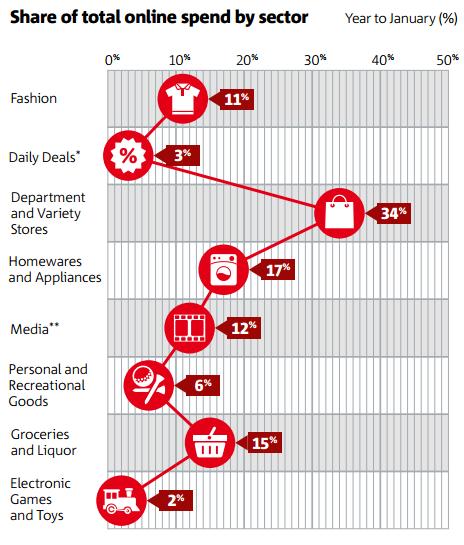
Department stores and appliance retailers the big winners, or losers online?
The mainstreaming of e-commerce can be seen in the leadership of department store products with a whopping one third of online spending. Once slow to adopt, Myer now offers 119,000 individual products online.
Domestic operators still have the lion’s share of online sales at around 75%. Gerry Harvey’s call for a GST on foreign online sales is just noise when you consider he mostly sells homewares and appliances, the second largest online category. I don’t see Australia Post delivering washing machines bought from Best Buy New York via their online store as a threat to Gerry. The threat is internal, his stores are failing to add value to the sales process and Harvey Norman still doesn't appear to have a strategy to compete with local online challengers.
Challenger brands have an advantage online
If anything, e-commerce puts the power back into the hands of customers who want to deal direct with manufacturers. Australian challenger brands, when they make a product that locals actually want, can cut out the blood sucking Coles/Woollies duopoly and the Gerry Harvey’s.
When brands reinvest into marketing a portion of the retailer margins that going online cuts from the delivery chain, they can grow share long term. This way e-commerce becomes a WIN, WIN equation for brand and customer.
An example of this approach is the transformation of a traditional Australian designer manufacturer of compression and sportswear – Quick Response. UNO has helped them transform from a wholesaler at the mercy of retailers to a direct-to-consumer e-business. This challenger brand is now competing with SKINS, (the retail market leader with a high priced foreign made product), by offering superior Australian made garments direct online, at a better price. Check out the QRS compression online store.
The future for online retail marketing
While retail sales generally have been mostly flat, ABS figures show Australian’s spent 27% more online in the year to March than the year before.
The NAB online spend index doesn’t include online shopping paid for by Paypal, transfers or EFTPOS, so the 6.5% of all retail spending measured in the latest report to March 2014 is an underestimate of the reality. Marketers need to view online retail as a growing opportunity for current business growth, not just a nice to have in the future.
Source: National Australia Bank Online Retail Sales Index.
Read MoreTruth in advertising?
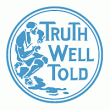
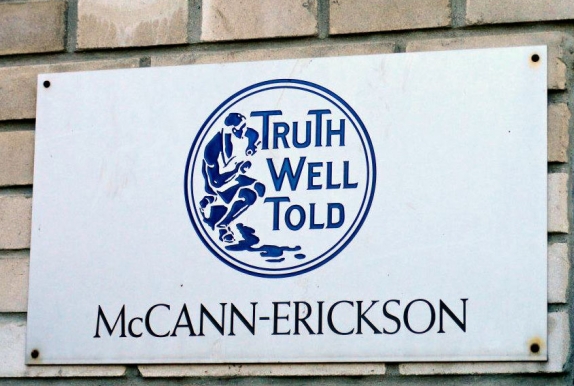
Which professions are most trusted in 2014? Research shows the Australian public rate nurses 91% for ethics and honesty, once again at the top, whereas most professions don't rank well in the trust stakes at all.
No prizes for guessing who rates last at 3%, it's the same profession that has been at the bottom every year since Roy Morgan began their annual "Image of Professions" survey in 1986.
2014 rankings of professions for ethics and honesty
- Nurses
- Pharmacists
- Doctors
- High Court Judges
- Dentists
- School teachers
- Engineers
- Police
- Supreme Court Judges
- University lecturers
- Accountants
- Bank managers
- Lawyers
- Ministers of religion
- Public servants
- Public opinion pollsters
- Financial planners
- Directors of public companies
- TV reporters
- Newspaper journalists
- Business executives
- Insurance brokers
- Stock brokers
- Talk-back radio hosts
- State MPs
- Federal MPs
- Union leaders
- Real estate agents
- Advertising people
- Car salesmen
Source: Roy Morgan annual 'Image of Professions' survey for 2014
Read MoreSince the GFC businesses and investors have struggled to find consistent ways to achieve double digit returns. You can continue to blame the shake out that the credit crunch brought down on our heads, or perhaps the current tough environment is the new normal. The new normal is a world where businesses and governments and media proprietors no longer have control. Everything has been digitised, and thanks to Google and global Internet access from mobile phones at low prices the slevers are now controlled by the public, your customers.
The last decade has seen what Deloitte term the era of Digital Disruption. In a paper last year they identified which Australian industries are facing a short fuse, big bang trashing of their business models. Traditional business models that could control supply and demand and charge a premium have dissappeared or in the case of Delloittes hit list of financial services and are about to.
The businesses that prosper will be those that can embrace the new digital normal. It is the business managers that apply design thinking to their entire way of operating that will survive. The good news for SMEs is they have eless to lose than corporations and also have the management structure to embrace change. The best thing about all this si design thinking makes more money for a business than traditional management approaches. Here are some figures on just how much more profitable design centric businesses have been since the GFC.
Design Thinking has doubled the returns of companies across a range of industries
The Design Management Institute in the US worked together with Motiv Strategies to create a share market index for tracking the returns of businesses that have Design Thinking at the centre of the organisation. Called the Design Value Index, it shows the 15 rigorously-selected companies that understand the value of design beat the S&P Index by a whopping 228% over the last 10 years.
Who are these profit powerhouse businesses and what do they have in common?
Design is an integrated function across the entire enterprise; they invest in design and it shapes the way employees interact and report, management structure is flat or receptive to ideas; experienced design executives are given power to direct design activities; and there is a senior leadership-level commitment to design. Some of the companies on the list won’t surprise you – Apple, Coca-Cola, Walt Disney and Nike. Others might – Ford, Herman-Miller, IBM, Intuit, Newell-Rubbermaid, Procter & Gamble, Starbucks, Starwood, Steelcase, Target and Whirlpool.
Designers are lateral thinkers, utilise their creative leaps
The way designers think is much more open to ideas, random thoughts from diverse sources and then building on these. By starting with the question what does a customer want and what makes them happy the designer is liberating from current accepted practices within a business. They challenge all aspects, collaborating across all the people in a business from sales to complaints, production to procurement. Compare this to control and command structures, like the public service where you aren’t allowed to ask a superior a question let alone challenge what they believe is the way it’s always been done.
Change, rather than wait to be redundant. As Deloitte warns, redundancy is coming sooner rather than later.
Read More
Since the GFC businesses and investors have struggled to find consistent ways to achieve double digit returns. You can continue to blame the shakeout that the credit crunch brought down on our heads, or accept that the current tough environment is the new normal. We now have to operate in a world where businesses and governments and media proprietors no longer have control. Everything has been digitised.
Thanks to Google the information levers are now controlled by the public. In other words, your customers now call the shots.
to Google the information levers are now controlled by the public. In other words, your customers now call the shots.
The last decade has seen what Deloitte term the era of Digital Disruption. In a paper last year they identified which Australian industries are facing a short fuse, big bang trashing of business models. Traditional business management techniques that could control supply and demand and charge a premium have disappeared. You can see from Deloitte's hit list, even industries not used to rapid change like financial services and arts and recreation are about to face significant disruption.
Deloitte's Digital Disruption map
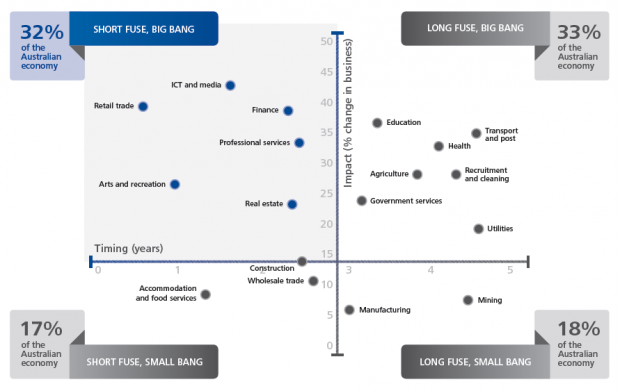
The formula for small & medium business survival in this time of disruption
The businesses that prosper next year and beyond will be those that can embrace the new digital normal. It will be the business managers who apply design thinking to their entire way of operating that will survive. The good news for SMEs is they have less to lose than corporations and more flexibility in the management structure to embrace change.
SMEs are perfectly placed to become tomorrow's challenger brands. The best thing about all this is design thinking makes more money for a business than traditional management approaches. Here is a chart that shows just how much more profitable design-centric businesses have been since the GFC.
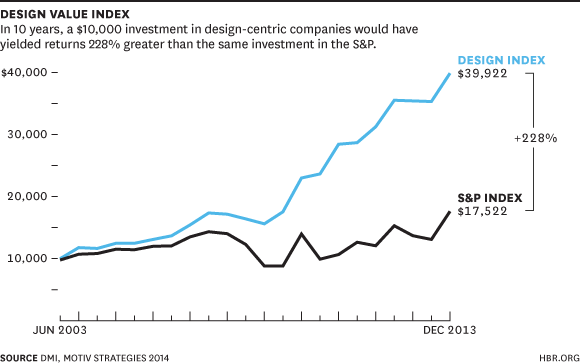
Design Thinking has doubled the returns of companies across a range of industries
The Design Management Institute in the US worked together with Motiv Strategies to create a share market index for tracking the returns of businesses that have Design Thinking at the centre of the organisation. Called the Design Value Index, it shows the 15 rigorously-selected companies that understand the value of design beat the S&P Index by a whopping 228% over the last 10 years.
Who are these profit powerhouse businesses and what do they have in common?
Design is an integrated function across the entire enterprise; they invest in design and it shapes the way employees interact and report, management structure is flat or receptive to ideas; experienced design executives are given power to direct design activities; and there is a senior leadership-level commitment to design. Some of the companies on the list won’t surprise you – Apple, Coca-Cola, Walt Disney and Nike. Others might – Ford, Herman-Miller, IBM, Intuit, Newell-Rubbermaid, Procter & Gamble, Starbucks, Starwood, Steelcase, Target and Whirlpool.
Designers are lateral thinkers, utilise their creative leaps
The way designers think is much more open to ideas, random thoughts from diverse sources and then building on these. By starting with the question what does a customer want and what makes them happy the designer is liberating from current accepted practices within a business. They challenge all aspects, collaborating across all the people in a business from sales to complaints, production to procurement. Compare this to control and command structures, like the public service where you aren’t allowed to ask a superior a question let alone challenge what they believe is the way it’s always been done.
Change, rather than wait to be redundant. As Deloitte warns, a big bang of disruption is coming sooner rather than later for most businesses.
Read MoreHow do you lead your business in the Digital Age?
The answer is in the mail. Australia Post is over 204 years old, but that hasn’t stopped it making the most of the digitised world. At a presentation to business leaders at the AGSM Leading The Digital Enterprise event yesterday, I found Tracey Gosling, a director of Australia Post, the biggest surprise. While the usual suspects, like the Head of Policy at Facebook and an author on Innovation helped open the eyes of the bank managers and bureaucrats in the room to the way generation X and Y want to be treated at work, it was the true stories of change at Australia Post I found most useful.
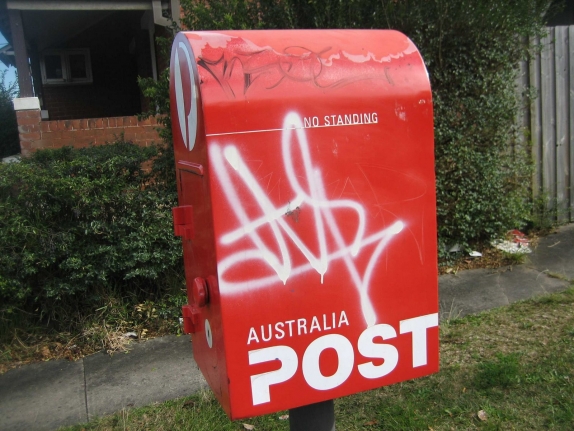
What's the future for AusPost in a digitised world?
Tracey shared real examples of the often simple ways ordinary people in their business have made changes that have worked. They show us what can actually be achieved when the starting point is very grim. Which gives real hope for small and medium sized businesses that aren't as tied down by the inertia of a monopoly like AusPost.
Tracey painted a picture of a vast post office workforce laboring under the emotional burden of the fear of change. Imagine you were a postie, one of my schoolmates from 30 years ago still is. Imagine over the last decade the postie doing the daily rounds would feel the bag of mail on their back was lighter than the week before. And next week it will be lighter still as people stop posting letters. They'd be worrying when will the day come there is no mail to deliver and they're out of a job?
To survive Australia Post has to manage a bigger change to the way customers exchange information than past revolutions like telegraph to telephone, horse borne deliveries to airmail, phone to fax. The Internet has changed everything more significantly than any of those innovations. Manage the change they have.
To quote the Australia Post annual report: “For the 13th consecutive year, we met or exceeded all of the performance standards that relate to our community service obligations. We delivered 95.5 per cent of domestic letters on time or early (against our 94 per cent target) and we increased the number of postal outlets to 4,429 nationwide. Total revenue grew to $5.9 billion and our after-tax profit increased by 10.9 per cent to $311.9 million. This means net profit has grown 21 per cent per annum since we enacted our Future Ready transformation program."
What has AusPost changed to keep up? Nearly everything, they had to. Last year they lost $189 million on mail delivery. AusPost now makes more from servicing e-commerce businesses and other activities that didn’t exist just a decade ago. There are secure 24/7 Parcel Lockers within minutes drive of most homes for out of hours parcel deliveries, digital self serve kiosks in post shops and soon digital I.D. recognition software that will mean documents like banking applications and contracts won’t need signatures by hand.
If a bureaucracy can go digital, so can your business
These changes to a huge and diverse business are making sure it can remain competitive as digitisation changes the world. As with most things in business, change management is being enabled at Auspost from the top. CEO Ahmed Fahour is a case study in the new style of management required for the digital age – leadership by openness, not power. This infographic sums it up nicely.
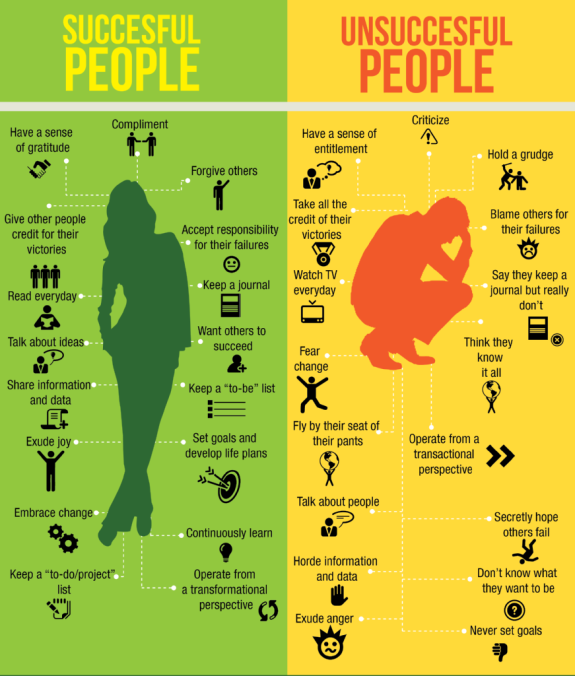
View this image on Pinterest.
Here are some examples of how Ahmed Fahour has let go of control:
1. Let staff fail
Individuals in offices can change their methods behind the counter to see if it works better than current processes without asking prior permission from senior management. If it doesn’t work, no great loss. If it does make an improvement, it’s shared across the organisation.
2. Social media is for everyone
While most government departments still don’t allow social media or even Google to be used in the office, Fahour has let employees at every level of share an opinion on Facebook. Just a few years before only 2 people were officially given the role to manage social media, yet even then there were 15,000 conversations happening on social media each year amongst staff.
Businesses need to recognise they can’t control what staff want, or constantly roadblock how they want to do it. Indeed today, in the words of former Cisco Senior Director Martin Stewart-Weeks, "a network routes around an obstacle." It's the same with staff, they will go around you, or leave.
3. What does the customer want that they’re not getting?
To improve the way they can fulfill for e-commerce customers, staff who had never shopped online were encouraged to do so in work hours. This led to an understanding at many levels of post employee of what online businesses do well and not so well, and discover what shoppers want from the whole order to delivery process. One consequent innovation is the 24/7 Parcel Locker, which means you don’t have to be at home to receive a valuable e-purchase.
4. What can you do that’s new?
Things are changing fast, so what you’ve always sold in the past is less likely to be as attractive to new customers tomorrow. Again, take inspiration from the top postie:
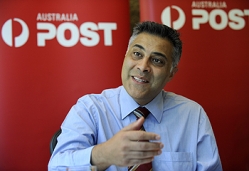 “We capitalised on the boom in online shopping with the Parcel & Express Services segment earning profit of $354.8 million, on the back of 9.3 per cent growth in domestic parcel volumes. And, despite difficult retailing conditions, Retail Services profit again grew to $200.6 million, mainly through adding new financial and identity services.”
“We capitalised on the boom in online shopping with the Parcel & Express Services segment earning profit of $354.8 million, on the back of 9.3 per cent growth in domestic parcel volumes. And, despite difficult retailing conditions, Retail Services profit again grew to $200.6 million, mainly through adding new financial and identity services.”
“Initiatives are all focused on capturing our immediate customer growth opportunities in the digital economy – especially in e-commerce, digital communications and trusted services.”
We are constantly exploring the new possibilities with our clients, it's how we help to keep them growing as successful challenger brands.
Read More
 Making meaningful comparisons as a consumer is challenging, especially with superannuation. Christopher Zinn says we need to understand how to make informed choices when incumbent businesses operate in a "confuscopoly".
Making meaningful comparisons as a consumer is challenging, especially with superannuation. Christopher Zinn says we need to understand how to make informed choices when incumbent businesses operate in a "confuscopoly".
It is a big ‘what if’ because too many businesses profit from the lack of determination of their customers for better products, services and even prices.The public’s desire for improvement is dulled by a widespread disengagement, resignation and inertia that anything they do may actually be much better for them.
And the consumer malaise seems worse in those markets which really count most because of the sums involved: superannuation, health and other insurances, energy such as electricity and telecommunications.
The symptoms are a lack of switching to better offers, which tends to benefit the incumbent above the challenger brand, and even paying over the odds by sticking with the wrong plan and perhaps the wrong provider.
The figures are sobering. The Australian Communications and Media Authority says poor plan choice around telecoms has cost consumers a probably under-estimated $1.5 billion a year.
Superannuation is confusing for customers
The ATO holds more than $18 billion in lost superannuation accounts. And despite more than 11 million Australians are covered by private health insurance less than 40,000 of them switch each year.
The fault is not solely the consumers. The ‘confusopoly’ of the mobile phone market in particular makes meaningful comparisons more than challenging.
Our cognitive biases, which make us particularly vulnerable to decisions around money and cause us to favour the present as opposed to the future, do not serve us well when it comes to assessing strategies around retirement savings.
And the complex and changing rules around health cover and premium rebates tend to drive policy-holders to sit pretty instead of seeking better value.
Of course some consumers are determined and realise a little time and effort in acquiring knowledge of these markets can save significant pain and expense.
But there’s a limit to even their patience and how much effort is worth it for how little a reward. There’s also the issue of expertise and the imbalance of information: as consumers we are amateurs buying from professionals.
We may only purchase a new car every few years, but the sales staff sell them every day, and however canny you are they will always know more about the vehicle, its true value and how to upsell you on various unnecessary warranties.
One way to correct this asymmetry, as it’s sometimes called, is to gather like-minded consumers together and use their numbers as leverage in negotiating better terms.
It’s already happening in specific markets such as energy and insurance as One Big Switch, with whom I used to be director of campaigns, has demonstrated here and overseas.
Another way is selectively reforming markets by regulation. In Australia conflicts of interest with financial planners led to the Future of Financial Advice (FoFA) legislation.
The government is seeking to severely dilute these much needed consumer protections, claiming they are somehow excess ‘red-tape’. In fact they represent a much-needed shark-proof cage for consumers to more safely navigate financial waters.
In the US and UK regulation is helping liberate consumers’ usage data from the back offices of utilities and banks so citizens can employ trusted third parties to crunch the numbers and help them make better decisions.
The determined consumer can take back control
Being determined as a consumer is not just a state of mind, although that helps. In the future it will require the technologies which can bring us together quickly and cheaply to use some people power in markets.
It will also require more consumers to get hold of their own data and then find emerging intermediaries to help them make real sense of the complexity and choice fatigue which bedevils too many markets.
Determined consumers do not need to be told to shop around or read the fine print. They already know that, but they do need help in turning their determination into better decisions.
Christopher Zinn is an independent consumer advocate currently running a campaign to highlight the financial advice protections (www.saveourfofa.com.au). His other initiative is www.determinedconsumer.com.au which is aimed at motivating consumer action. UNO worked with Chris on consumer empowering programmes at CHOICE. He also co-founded One Big Switch as well as being a repoorter/producer at the ABC, Channel Nine and several newspapers.
Read More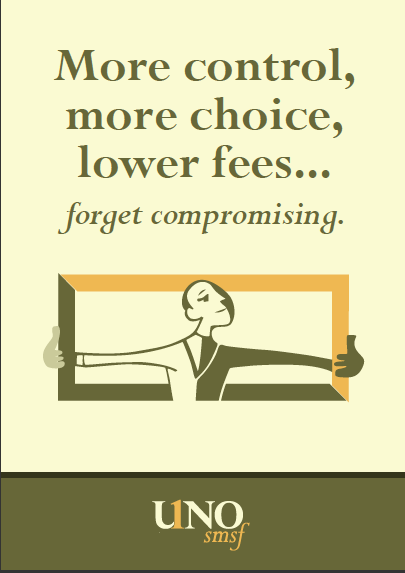



Scan the QR code for our contact details.
Download the Neoreader app.
© COPYRIGHT 2013 UNO marcomms Privacy